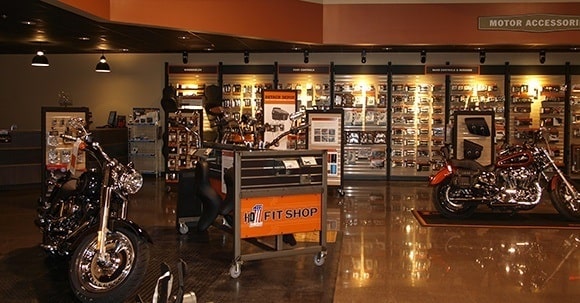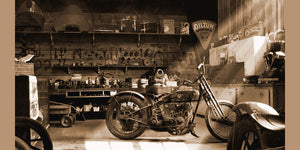Top MX Gear NZ: Prepare for Your Next Off-Road Journey
Understanding Motorcycle Gears: Just How to Maximize Your Riding Experience
In the world of motorcycling, understanding the art of gear adjustment is vital for enhancing your riding efficiency. Effectively using and comprehending bike gears can substantially impact fuel, control, and acceleration performance, transforming an ordinary experience right into a seamless, exhilarating journey.
Recognizing Gear Mechanics
Just how do the intricacies of equipment mechanics influence motorbike performance? At the core of motorcycle dynamics, equipment technicians play a crucial role in converting engine power into motion, inevitably determining speed and control. Gears, carefully crafted elements, allow motorcyclists to enhance torque and rate, making sure a seamless transition via different terrains and velocities. The gear ratios, very carefully made, establish the connection between engine changes and wheel turns, influencing velocity and gas performance.
Comprehending equipment auto mechanics starts with identifying the importance of the transmission, which houses multiple equipments of differing sizes. These gears communicate via a procedure recognized as meshing, where teeth of various equipments engage to transfer power.
Moreover, the idea of equipment changing is indispensable to taking full advantage of performance. Prompt and smooth shifts guarantee that the engine operates within its ideal power band, stopping unnecessary stress and boosting longevity (motocross parts nz). By comprehending these mechanical intricacies, motorcyclists can accomplish an unified mix of power, control, and efficiency, boosting their riding experience
Timing Your Shifts
Change timing proficiency is important for enhancing motorcycle efficiency and boosting the riding experience. Appropriately timed changes make certain that the engine runs within its optimal power band, which is critical for preserving control, achieving smooth velocity, and making certain the longevity of the motorbike. Motorcyclists need to develop an user-friendly feeling of when to change equipments, which entails recognizing the partnership in between engine transformations per min (RPM) and rate.
To master shift timing, pay close attention to the engine's sound and feel, as these offer important clues regarding when to change gears. When the engine approaches the top variety of its power band without getting to the redline, the excellent change factor normally happens - motorbike shop. Moving prematurely can result in a lack of power, while shifting far too late might trigger unneeded engine stress
Additionally, road problems and riding design impact change timing. In contrast, throughout highway riding, less shifts at greater speeds can be extra proper.
Enhancing Gas Effectiveness
While grasping bike gears is essential for efficiency, enhancing fuel efficiency is just as vital for both environmental and economic factors. Ideal fuel intake not only lowers operational prices however also minimizes the ecological impact of riding. To attain this, one should recognize the intricate partnership between equipment option and engine efficiency.
To start with, selecting the appropriate gear at ideal rates can dramatically influence gas consumption. Riding in a greater equipment at lower speeds can bring about engine carrying, which is damaging to both fuel economic situation and engine wellness. On the other hand, riding in lower equipments at broadband results in unneeded fuel consumption. Thus, maintaining an optimal equilibrium by shifting equipments abreast with road conditions and prepared for maneuvers is necessary.
In addition, regular upkeep plays a critical duty in gas performance. Ensuring that the motorcycle is well-tuned, with tidy air filters and correctly inflated tires, can decrease and enhance the rules of aerodynamics gas wastage. Additionally, taking on a riding design that embraces steady velocity and smooth slowdown can add to better gas economic situation.

Techniques for Smooth Transitions
Accomplishing smooth equipment shifts is essential to improving the riding experience and making certain the longevity of a motorcycle's transmission system. Proper gear moving not only contributes to a smooth ride yet likewise minimizes wear and tear on the mechanical components. To master the art of smooth changes, cyclists have to focus on a couple of vital strategies.

Secondly, clutch control plays a critical duty. Engaging and disengaging the clutch efficiently needs practice. The clutch bar should be released gradually, enabling a smooth transfer of power from the engine to the wheels without causing a shock or abrupt movement.

Adjusting to Roadway Conditions
Browsing diverse roadway problems is an essential ability for any kind of motorcyclist intending to maintain control and safety. Whether you're riding on damp surfaces, crushed rock roadways, or browsing sharp turns, your ability to adapt your gear usage and riding technique is critical. Comprehending just how to adjust your gears appropriately motorcycle cables can considerably impact traction and security, making sure a safer trip.
On damp roads, it is recommended to keep greater gears to minimize torque and decrease wheel spin. This strategy helps preserve hold on unsafe surfaces, permitting smoother velocity and deceleration. In contrast, when riding on gravel or uneven surface, lower equipments are better. Reduced gears provide better control and allow you to respond even more quickly to unexpected changes in the roadway surface.
Sharp curves demand accurate gear administration to balance rate and control. Downshifting before getting in a curve can aid maintain momentum while making certain the bike continues to be stable throughout the turn. Consistent method in different conditions improves your capacity to respond and forecast to changes in roadway structure and slope.
Conclusion
Grasping motorcycle gears substantially boosts the riding experience by enhancing velocity, fuel, and control performance. A detailed understanding of equipment mechanics and precise change timing makes certain the engine runs within its ideal power band, while smooth shifts through efficient clutch and throttle sychronisation boost comfort and efficiency. Adjusting equipment selection to different roadway problems, such as utilizing greater gears on wet her response surface areas and reduced equipments on gravel, more boosts handling and security. Ultimately, these abilities boost the more info here total trip.
Recognizing equipment mechanics begins with recognizing the significance of the gearbox, which houses multiple equipments of varying sizes. These equipments communicate via a procedure recognized as meshing, where teeth of different equipments engage to transfer power (motorcycle shop). Mild modifications to the throttle throughout equipment changes can stop jerky movements and maintain a consistent riding speed
Whether you're riding on damp surfaces, crushed rock roadways, or navigating sharp turns, your capability to adapt your equipment usage and riding strategy is vital. Adapting equipment selection to different roadway conditions, such as utilizing higher equipments on damp surfaces and lower gears on gravel, additional enhances handling and security.